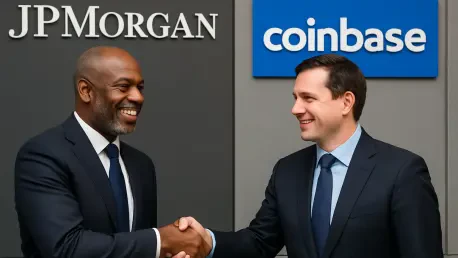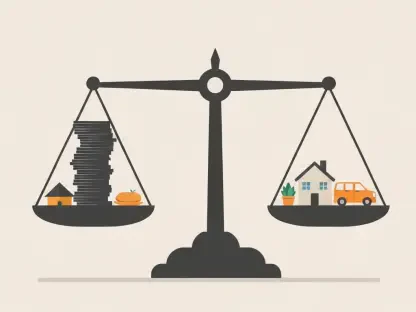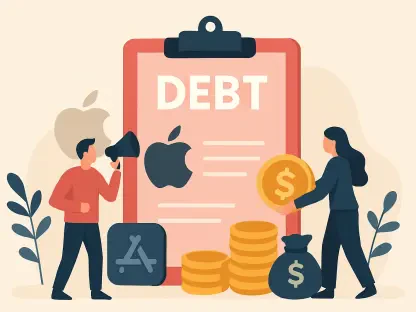What happens when a banking giant steps into the wild world of digital currency? Picture this: millions of everyday consumers swiping their credit cards to buy Bitcoin or Ethereum as easily as they’d order a coffee, a vision that is no longer a distant dream but a reality unfolding right now with JPMorgan, a titan of traditional finance, teaming up with Coinbase, the leading U.S. cryptocurrency exchange. This groundbreaking alliance is tearing down barriers between old-school banking and the digital asset frontier, promising to reshape how money moves in a tech-driven era.
Why This Alliance Is a Game-Changer
At its core, this partnership signifies a pivotal moment for both industries. With the cryptocurrency market recently valued at a staggering $4 trillion, the demand for digital assets has reached unprecedented heights. Major banks, once skeptical of crypto’s volatility, are now recognizing its staying power. By joining forces with Coinbase, JPMorgan isn’t just dipping a toe into digital waters—it’s diving in headfirst, signaling to the world that crypto is no longer a niche but a fundamental part of modern finance.
The implications extend far beyond a single deal. This collaboration reflects a broader trend of convergence, where traditional financial institutions are racing to meet consumer hunger for innovative investment options. For the average person, this means accessing cryptocurrencies without the hassle of complex platforms or risky third-party services. It’s a bold step toward making digital assets as commonplace as stocks or savings accounts.
Blending Old Money with New Tech
Historically, banks like JPMorgan viewed cryptocurrencies with caution, citing concerns over regulation and stability. Yet, shifting trends in consumer behavior, especially among younger, tech-savvy generations, have forced a rethink. With millions flocking to digital currencies for both investment and daily transactions, ignoring this market is no longer an option. The partnership with Coinbase serves as a bridge, merging the security of established banking with the innovation of blockchain technology.
This isn’t an isolated move. Other financial giants, such as PNC, have also partnered with Coinbase to offer crypto trading, underscoring an industry-wide pivot. Market data reinforces this shift—Coinbase’s stock has surged 50% over the past year, pushing its valuation to $95 billion. Its inclusion in the S&P 500 further cements crypto’s legitimacy, proving that what was once a speculative gamble is now a cornerstone of investment portfolios.
How the Partnership Works in Real Life
Diving into the specifics, this collaboration brings tangible benefits to consumers. As of now, Chase credit card holders can fund their Coinbase wallets and purchase cryptocurrencies directly with a swipe. Gone are the days of cumbersome bank transfers or navigating shady exchanges—buying digital assets is becoming as seamless as any online purchase. This integration eliminates friction, opening the door for millions to explore crypto without technical hurdles.
Looking ahead, even more features are on the horizon. By next year, customers will be able to redeem credit card reward points for USDC, a stablecoin pegged to the U.S. dollar, offering a low-risk entry into the crypto space. Additionally, linking bank accounts to Coinbase will streamline transactions further, making the process smoother than ever. These steps aren’t just about convenience; they’re about embedding digital currencies into the fabric of everyday banking.
What the Experts Are Saying
Industry voices are buzzing with optimism about this development. A Coinbase representative stated, “Collaborations with institutions like JPMorgan are a testament to the growing trust in digital assets, bringing them closer to mainstream users.” This sentiment aligns with market trends—stablecoins like USDC are gaining traction for their ability to sidestep the wild price swings of other cryptocurrencies, making them ideal for payments and trading.
Data backs up the excitement. Reports indicate that stablecoins are fueling adoption in emerging financial platforms, with their use in instant, low-cost transactions skyrocketing. Legislative proposals, such as the GENIUS Act, could provide much-needed regulatory clarity, further accelerating this momentum. These factors suggest that partnerships like this one aren’t mere experiments but calculated moves in a sector poised for explosive growth.
Navigating the Crypto Frontier as a Consumer
For those eager to jump in, this alliance offers a unique opportunity to engage with cryptocurrencies safely. Start by setting up a Coinbase account if you haven’t already, ensuring you’re ready to link your Chase credit card for direct purchases. Take time to explore the platform’s security tools to safeguard your investments, as protecting digital assets remains paramount in this evolving space.
Understanding stablecoins is also key, especially with the upcoming option to convert reward points into USDC. Unlike more volatile cryptocurrencies, stablecoins provide a steady value, making them a practical choice for beginners. Use them for transactions or as a stepping stone to other digital currencies. Lastly, stay updated on potential fees or limits for credit card purchases, as well as regulatory shifts that might affect how crypto operates. Keeping informed ensures you can make the most of this financial revolution with confidence.
Reflecting on a Historic Shift
Looking back, the union of JPMorgan and Coinbase stood as a defining moment in the fusion of traditional banking and digital innovation. It marked a time when barriers crumbled, allowing everyday consumers to embrace cryptocurrencies with unprecedented ease. The introduction of stablecoins and seamless transactions reshaped perceptions, turning what was once a speculative market into a practical tool for financial growth.
As this partnership unfolded, it became clear that the future held even greater potential. Consumers and investors alike were encouraged to stay engaged, exploring how digital assets could fit into their financial strategies. Watching for regulatory advancements and new banking integrations promised to keep this space dynamic, ensuring that the journey of crypto into mainstream finance continued to evolve in exciting ways.









